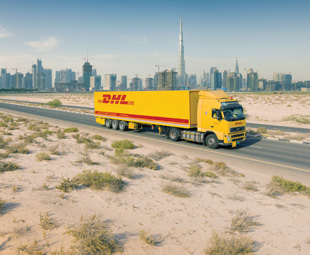Doing its part?

Among the richest countries in the world, the nations in the Middle East region are maintaining a positive rate of growth. We discover what role the transport industry is playing in this economic wonderland
The paper Transport Networks in the Middle East Region: A Spatial Analysis – which was published in the International Journal of Scientific Engineering and Research – says it best: “Transport is among the most important factors for the development of a country or region. It is a process of transacting goods and services between places.”
The article, written by Riyazuddin Khan – an assistant professor at the Bhim Rao Ambedkar College (part of the University of Delhi, in India) – points out that the Middle East region has an excellent geographic location for international trade.
The World Bank notes: “For most countries in the Middle East and northern Africa, the transport sector is central to their main objectives of accelerating economic development through export-led growth, creating jobs, and reducing vulnerability and exclusion. It is also key to regional integration and vital to improving the quality of life and reducing poverty.”
It adds that, in general – with the exception of Yemen and Djibouti – transport systems in the Middle East and northern Africa are relatively well developed. “Most countries have extensive road networks, with high capacity in some areas; they also have important facilities for air and sea transport, and, in several instances, a sizable rail network.”
The World Bank continues: “The quality of transport infrastructure is, however, often deficient and cannot support growing, modern economies. There are also serious capacity gaps in urban and rural transport infrastructure and multiple constraints to regional transport. In addition, congestion is a growing and serious problem in most large urban areas.”
 Khan adds that in most countries within the Middle East region, the road network suffers from poor maintenance, despite continuous efforts to upgrade, modernise and expand its size.
Khan adds that in most countries within the Middle East region, the road network suffers from poor maintenance, despite continuous efforts to upgrade, modernise and expand its size.
Things aren’t looking too bright for rail transport either … “In general, the railway network suffers from limited expansion and a lack of connectivity in many parts of the region, as well as poor maintenance,” Khan points out. “Also, the capacity of the railway network is limited by the heterogeneity of its technical specifications.”
All hope isn’t lost, however. “To benefit from the strategic geographic location of the Arab world, many Middle Eastern states are modernising their existing airport infrastructure and facilities, as well as building new airports,” notes Khan.
This is playing an important, supportive role in the growth of economies across the Middle East – the extent of which is highlighted in a study by the Air Transport Action Group: a coalition of organisations and companies throughout the global air transport industry that drive the sustainable development of the air transport sector.
The report, entitled Aviation: Benefits Beyond Borders, outlines how air transport supports two million jobs and US$ 116 billion (around R1,6 trillion) in gross domestic product (GDP) in the region.
Of the two million jobs across the Middle East region, 356 000 are within the industry, itself, and the rest are supported as part of the industry’s supply chain and the significant role air transport plays in the tourism sector.
Abdul Wahab Teffaha, secretary general of the Arab Air Carriers Organisation, comments: “The report shows that airlines in the Middle East supported 149 000 direct jobs in 2012 – 42 percent of direct jobs generated by air transport in the region.”
He continues: “Going even further, these airlines extensively contributed to a wider US$ 116 billion in GDP supported by the whole air transport sector supply chain in the Middle East. It is crucial that this value is embraced by our governments and that they continue a healthy taxation environment.
“They should also continue to develop infrastructure, and further build on the success of their airlines by pursuing greater liberalisation of market access, and striving towards seamless air traffic management in the region.”
Salem Jahdli, director of Middle East affairs for the Civil Air Navigation Services Organisation, adds: “The economic benefits generated by rapid Middle East air traffic growth are threatened by increasing congestion. With around half of the airspace reserved for military use, states should allow more flexible use of military airspace for commercial flights.”
Jahdli suggests that the present fragmentation and lack of harmonisation could be overcome if states would organise airspace according to operational requirements rather than national borders.
It is clear that the Middle East region’s transport sectors have some hurdles to overcome, but as Khan says: “Transport is among the most important factors for the development of a country or region.”
The transport industry is certainly doing its part for the Middle East region.
Published by
Focus on Transport
focusmagsa




